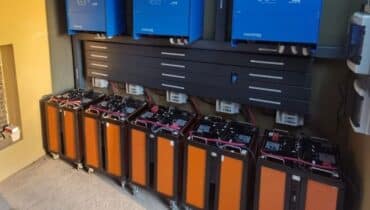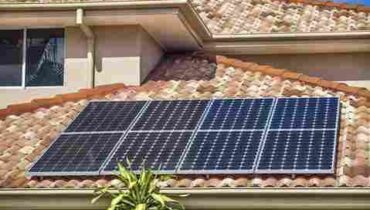Table of Contents
Determining the optimal tilt angle for solar panels is a critical consideration when harnessing the power of the sun for energy production. The right tilt angle ensures that your panels capture the most sunlight, ultimately maximizing your solar energy harvest. In this guide, we will explore the factors that influence the ideal tilt angle and provide valuable insights into how to make the most of your solar investment. Whether you’re a homeowner, a business owner, or simply passionate about sustainable energy, understanding solar panel tilt angles is key to unlocking their full potential. Additionally, if you’re contemplating the investment in solar power and curious about the lifespan of the technology, a common question arises: how long do solar panels last?
Solar panels are an incredible innovation, harnessing the power of the sun to generate electricity for our homes and businesses. If you’re contemplating investing in solar energy and curious about the long-term benefits, a common question arises: how long do solar panels last on a house? To maximize their efficiency, one crucial factor to consider is the tilt angle at which these panels are installed. In this article, we will explore the significance of the tilt angle for solar panels and how to determine the optimal angle for your specific location.
Practical Considerations
When deciding on the tilt angle for your solar panels, keep the following practical considerations in mind. Practical considerations are essential when determining the optimal tilt angle for solar panels. These factors take into account real-world, everyday aspects that can impact the effectiveness of your solar panel installation:
- Aesthetics: The appearance of your solar panel installation is an important practical consideration, especially if the panels are visible from the street or neighboring properties. Striking a balance between energy efficiency and aesthetic appeal is often necessary.
- Snow and Debris: In regions with heavy snowfall or frequent debris, a steeper tilt angle may be preferred. This helps snow and debris slide off the panels more easily, preventing them from blocking sunlight and hindering energy production.
- Maintenance Access: Consider the ease of access for cleaning and maintenance. Lower tilt angles can make it simpler to reach and clean the panels, but it’s important to strike a balance between accessibility and optimal energy production.
- Shade Management: Practical considerations should also include managing shade from nearby objects, such as trees or buildings. A shaded solar panel is significantly less efficient, so taking steps to minimize shading is crucial.
Note: Balancing these practical considerations with the optimal tilt angle for energy production is essential to create a solar panel installation that’s not only efficient but also functional and visually appealing.
Top 3 Tilt angle for solar panels
- Solar Panel Mounts Clamp Tilt Angle
- SUNSUL Solar Angle Guide
- KarlKers Solar Angle Guide Solar Tracker Tool
1. Pack of 2 Adjustable Solar Panel Tilt Mount Brackets:
- This appears to be a product that includes two adjustable solar panel tilt mount brackets.
- It’s designed for mounting solar panels on various surfaces, including rooftops and RVs.
- The brackets can be individually adjusted to tilt the solar panels at angles ranging from 10° to 60°.
- These brackets are suitable for holding solar panels with a power capacity of 400 W and 500 W.
2. SUNSUL Solar Angle Guide, Solar Panel Accessories:
- This product seems to be a solar angle guide provided by a brand called “SUNSUL.”
- It’s categorized as a solar panel accessory.
- The purpose of this accessory is to allow precise angle adjustment for solar panels.
- The idea is to enhance the efficiency of solar energy conversion.
- It is particularly designed for portable solar panels, including foldable ones, and can be used for solar battery chargers.
3. KarlKers Solar Angle Guide Solar Tracker Tool:
- This product, on the other hand, is a solar angle guide or tracker tool provided by “KarlKers.”
- Similar to the SUNSUL guide, this tool is used for adjusting the angle of solar panels.
- Its primary aim is to improve the efficiency of solar energy production.
- This tool is also suitable for portable solar panels, including foldable ones.
- Additionally, it may serve as a sun angle finder guide, helping users optimize the orientation of their solar panels for maximum sun exposure.
Note: In summary, the first product is a set of two adjustable solar panel mount brackets that can be used for mounting solar panels on rooftops and RVs. They offer flexibility in adjusting the tilt angle. The other two products, offered by different brands, are solar angle guides or tracker tools designed to help users precisely adjust the angle of their solar panels to improve energy conversion efficiency, especially for portable and foldable solar panels. They may also function as sun angle finders to optimize solar panel orientation.
Why Tilt Angle Matters
The tilt angle of solar panels directly impacts their ability to capture sunlight efficiently. It dictates the angle at which panels face the sun and significantly influences energy production. If you’re exploring the various factors affecting solar panel efficiency, an important consideration is: does temperature affect solar panel efficiency? By optimizing the tilt angle, you can ensure that your solar panels harvest the most sunlight, leading to increased energy output and greater cost savings. The tilt angle of your solar panels plays a significant role in their overall performance. Here are a few key reasons why it matters:
Sunlight Exposure
The primary purpose of solar panels is to capture sunlight and convert it into electricity. The angle at which the panels are tilted affects how much sunlight they can receive. Adjusting the tilt angle can help ensure that the panels receive an optimal amount of sunlight throughout the day. If you’re exploring the longevity of solar panels and considering their installation, a common question arises: how long do solar panels last on average?
Seasonal Changes
Throughout the year, the sun’s position in the sky changes, resulting in variations in solar panel performance. By adjusting the tilt angle, you can optimize energy production in different seasons.
Factors Influencing Tilt Angle
Several factors come into play when determining the ideal tilt angle for solar panels:
Geographic Location
The latitude of your geographic location affects how the sun’s rays strike your panels. Higher latitudes may require steeper angles to compensate for lower sun angles, while lower latitudes may benefit from a flatter angle. Your location on the globe significantly affects the sun’s path and angle throughout the day. The ideal tilt angle for solar panels varies based on your latitude. If you’re considering sustainable living and wondering about the feasibility, a pertinent question might be: can you live off grid with solar panels? Understanding the optimal orientation for your specific location is crucial for maximizing energy production.
Panel Type
Different solar panels have unique specifications and may perform optimally at specific tilt angles. Monocrystalline, polycrystalline, and thin-film panels may have different recommendations. The type of solar panel you use also influences the optimal tilt angle. While some panels work best at a fixed angle, others are more versatile and can adapt to changing angles. If you’re considering the configuration of your solar panel system and wondering which is better series or parallel solar panels, it’s essential to factor in the flexibility of the panels and your specific energy needs.
Roof Orientation
The direction your roof faces and its available space can impact the range of tilt angles. Roofs facing south typically offer the best conditions for solar panel installation. If you’re installing solar panels on a roof, the orientation of your roof and the available space will impact the tilt angle options. Additionally, when considering your solar energy system, you might be wondering which is better inverter or solar panels; it’s important to recognize that both components play distinct roles in ensuring optimal energy conversion and efficiency.
Seasonal Adjustments
Depending on your energy goals, you may choose to adjust the tilt angle seasonally to maximize energy production. This involves changing the angle several times a year to accommodate the sun’s varying positions. Consider whether you want to optimize for a particular season or maintain a compromise angle that works reasonably well year-round. If you’re determining the best orientation for your solar panels, understanding what is the optimal direction for solar panels is crucial for achieving optimal performance throughout the year.
Calculating the Optimal Tilt Angle
Determining the optimal tilt angle for your solar panels is essential to ensure they capture the maximum amount of sunlight. While online calculators can simplify this process, you can also calculate it manually using some basic trigonometry. To find the ideal tilt angle for your solar panels, you can use online calculators or do the calculations manually using the following steps:
Online Calculators
Using online calculators is a convenient and accurate way to determine the optimal tilt angle for your solar panels. Many tools are available, and they often take various factors into account to provide a precise angle recommendation. Several online tools are available, such as the National Renewable Energy Laboratory’s (NREL) PVWatts Calculator. These tools take your location, panel type, and other factors into account to determine the optimal angle.
Manual Calculation
Performing a manual calculation for the optimal tilt angle of your solar panels involves some trigonometry. Here are the steps in brief:
- Find Your Latitude: Determine your geographic latitude, which you can easily obtain using maps or online tools.
- Choose a Season: Decide on the season you want to optimize for, as this will affect the tilt angle calculation.
- Use Trigonometry: For winter optimization, subtract your latitude from 90 degrees, and for summer optimization, subtract your latitude from 90 degrees and then add an additional 15-20 degrees.
- Adjust for Compromise: If you prefer a compromise angle for year-round performance, simply use your latitude as the tilt angle.
These manual calculations provide a rough estimate, but for precision, online calculators or professional advice are recommended.
FAQs
Q1: What is the ideal tilt angle for solar panels?
A1: The ideal tilt angle for solar panels varies based on your geographic location, but a general guideline is to match the angle to your latitude for maximum yearly energy production.
Q2: How does the tilt angle affect solar panel performance?
A2: The tilt angle determines how much sunlight your solar panels receive. It impacts energy production and the efficiency of your solar power system.
Q3: Do I need to adjust the tilt angle throughout the year?
A3: Depending on your goals, you can adjust the tilt angle seasonally to optimize energy production. Some systems use a fixed angle that works well year-round.
Q4: How do I calculate the optimal tilt angle for my location?
A4: You can use online calculators like the NREL PVWatts Calculator, or you can perform manual calculations using trigonometry with your latitude and desired season in mind.
Q5: What if my roof’s orientation isn’t ideal for solar panels?
A5: If your roof’s orientation is less than ideal, you can still install solar panels, but they may not perform at peak efficiency. Consider alternatives like ground-mounted installations.
Conclusion
The tilt angle of your solar panels is a critical factor in their performance. By carefully considering your geographic location, panel type, and practical considerations, you can determine the optimal angle for maximum energy production.
Whether you choose to use online calculators or perform manual calculations, This decision will have a lasting impact on the efficiency of your solar power system. Ensure that your solar panels are soaking up the sun’s energy to its fullest potential and making a positive contribution to your energy needs and the environment. If you’re in Florida and considering solar panel installation, you might be curious about how long do solar panels last in florida region’s specific climate and conditions.

